An interview with Vivian Kirkfield, author of From Here to There: Inventions That Changed the Way the World Moves
The Children’s Book Review
Writer for children—reader forever…that’s Vivian Kirkfield in five words. Her bucket list contains many more than five words—but she’s already checked off skydiving, parasailing, banana-boat riding, and visiting critique buddies all around the world. When she isn’t looking for ways to fall from the sky or sink under the water, she can be found writing picture books in the picturesque town of Bedford, New Hampshire. A retired kindergarten teacher with a Masters in Early Childhood Education, Vivian inspires budding writers during classroom visits and on her blog where she hosts the #50PreciousWordsforKids International Writing Challenge. She is the author of many picture books, both fiction and nonfiction. In this interview we talk about her latest non-fiction book, From Here to There: Inventions That Changed the Way the World Moves.
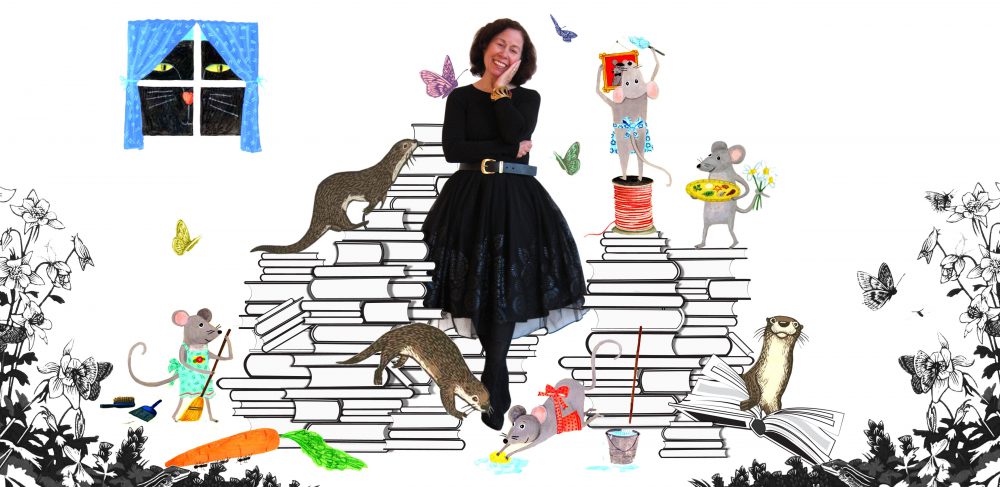
Bianca Schulze: Which five words best describe From Here to There: Inventions That Changed the Way the World Moves?
Vivian Kirkfield: Innovative; Inspiring; Nonfiction; Biography; Compilation
Can you share a highlight from the book? Or maybe your thoughts on, or an excerpt of, your favorite sentence, paragraph, or page?
Asking an author for a favorite sentence, paragraph, or page from her book is like asking parents which child is their favorite. 
Raye Montague, an African American woman, worked for the Navy in Washington, DC at a time when UNIVAC computers covered the entire wall of a room, and men were the only ones who operated them. But Raye, who at age 7 decided she was going to be an engineer even though people of color weren’t allowed to study engineering in southern colleges, was determined to be more than just a typist. To gain a promotion, she needed to work the night shift – but the buses didn’t run at night. That was a problem. Raye solved it by saving her money and buying a used car. But Raye still had one big problem. She didn’t know how to drive a car. She only knew how to start it and stop it. ‘I’d leave home about ten o’clock and drive no-mile-an-hour,’ she said. And then the next morning, I’d hang around till nine-thirty to wait for the traffic to let up.” Raye got her promotion and, in 1970, she led the team of naval engineers to create the first computer-generated design for a navy frigate.
I love that story because it is so inspiring – and I believe it will inspire young readers to follow their dreams.
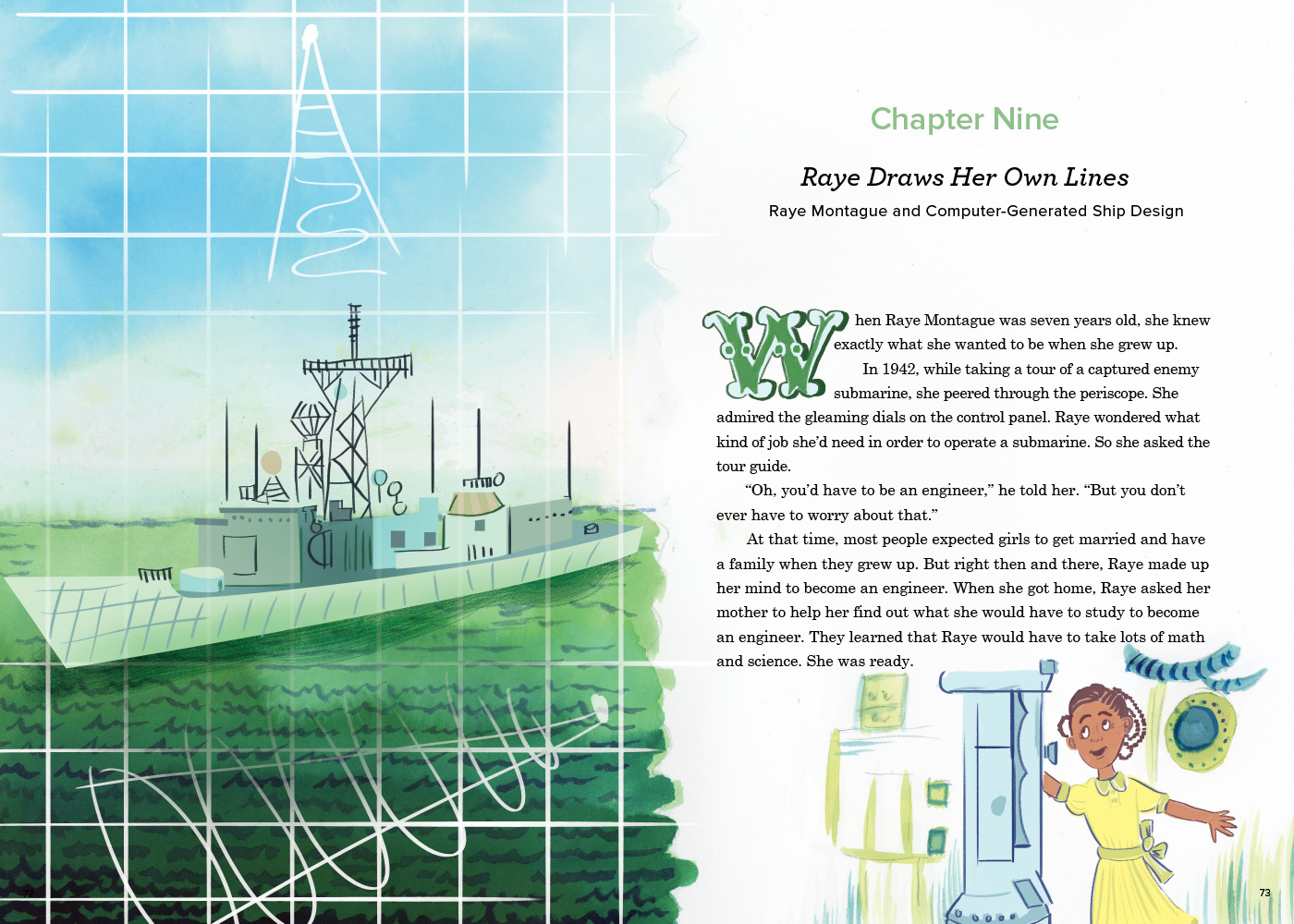
What has been the most rewarding reaction from a reader so far?
Today is launch day! And so, the only people who have read it are reviewers, friends, and family. Kirkus gave it a starred review and said,
“These innovations in transportation should inspire readers to go far…Educators will also delight in the hefty amount of supplemental backmatter.”
And it’s already been chosen as a Junior Library Guild Selection.
But the most rewarding reaction was from my 7-year-old granddaughter who, upon hearing me read several of the stories to her, asked, “Please grandma, read it again.”
Please share your thoughts on the role non-fiction books have to play in a child’s library.
Oh, my goodness. Nonfiction books. When I was a kid, I loved reading the Encyclopedia Britannica. I loved finding out about different places and people and events. And we need this now more than ever before – it’s so important for children to learn about other cultures and how every group of people has contributed to science, technology, engineering, math…as well as to literature, art, and music. I think nonfiction books, especially biographies, can spark curiosity and lead children to delve more deeply into whatever interests them – hopefully discovering their passion which, if followed, can lead to a life of purpose.
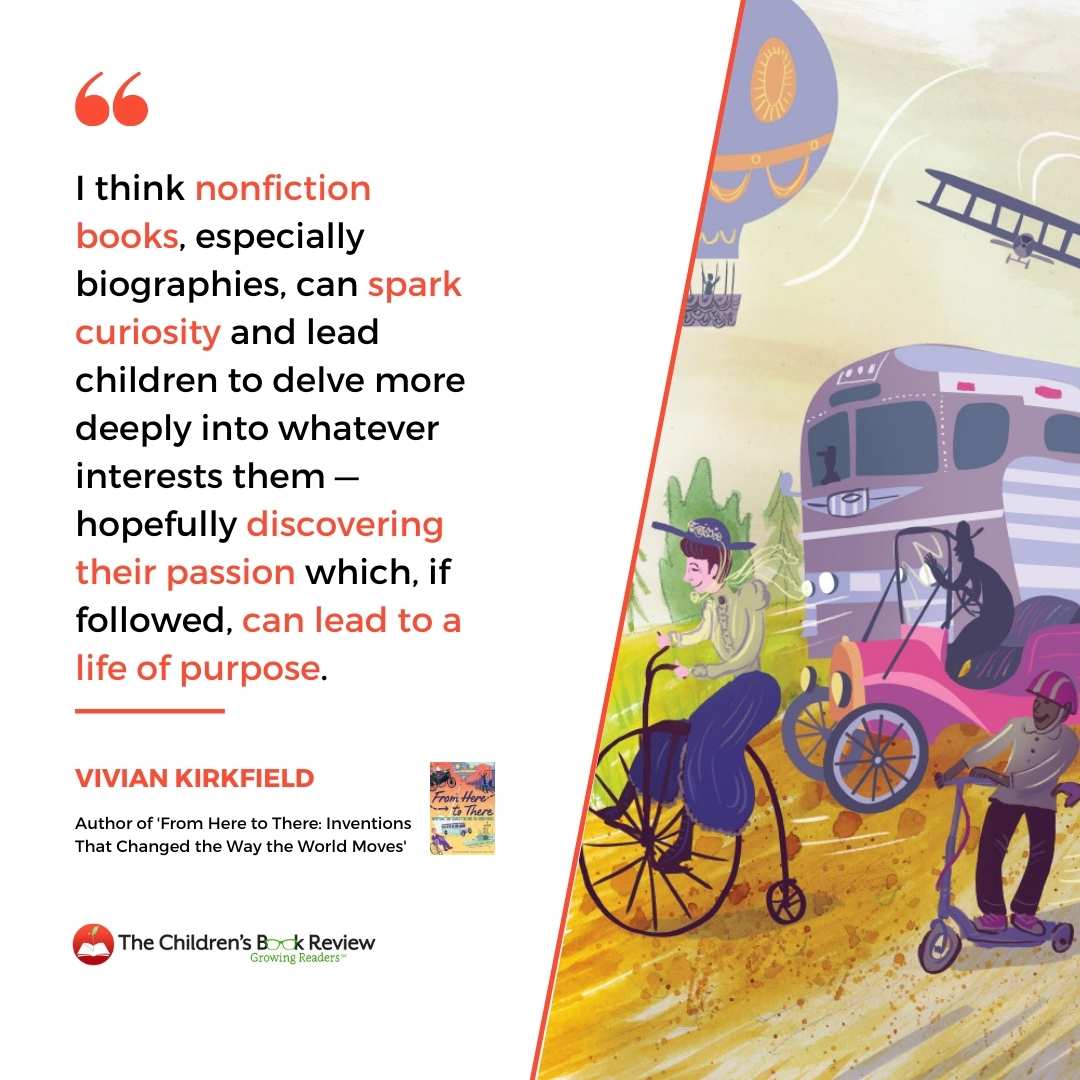
If you could make a change to the world—with an invention or an idea—what would it be?
Can someone please create an invention that enables every child to get a good education? And, along with that, the invention needs buttons and levers that will ensure that every child has a safe home, food to eat, and clean water to drink.
For your writing energy: sugar or salt, tea or coffee?
Tea, definitely! And something sweet, like a piece of warm apple or pecan pie a la mode, would be much appreciated. But I’m also a fan of air-popped popcorn, with a sprinkle of olive oil and a pinch of sea salt.
Writing tools: computer, pen and paper, or all of the above?
I usually start with an old-fashioned notebook and pen – using it to flesh out title ideas, take research notes, begin my rough draft. Then I switch to the computer because my handwriting is a scrawly scribble and with my poor vision, the ability to enlarge the fonts on the computer is a plus.
What’s on your nightstand? Any books?
I recently moved and lots of stuff is still packed in boxes (probably stuff I don’t need and will never unpack). I’ve become somewhat of a minimalist and find that I like things simple and uncluttered. My nightstand is fairly empty…a small lamp, one of my late husband’s art journals opened to one of my favorite pen and ink sketches of his, and a little CD player that I use to listen to Paul Simon, Elton John, Bob Dylan, and Billy Joel when I take a break and exercise. No books because my bed is one of the only places I don’t read.
Can you tell us something that even your most loyal fans may not know about you?
I’ve probably mentioned in other interviews that I was a timid child – afraid to try new things, go new places, and meet new people. But I think part of that can be attributed to the fact that I am extremely directionally challenged. North? South? East? West? If you turn me around, I’ll be totally confused. In fact, when I was in 6th grade in New York City, the class had gym/PE in the afternoon. I always went home for lunch (in those days, you didn’t think twice about letting a little kid walk home from school by herself). And in the season when baseball/softball was the sport, I often told my mom I had a stomach ache because I didn’t want to go back to school for the afternoon. The thing is that I loved playing baseball…I was a pretty good batter and runner and I could catch and throw the ball fairly accurately. So why, you ask, didn’t I want to play? If they put me In the outfield, I would get totally disoriented and if I caught the ball, I wouldn’t know which was first base and which was third base and I’d be in a quandary as to where to throw the ball. It created a lot of stress and anxiety. But innovations like cell phones and GPS have definitely alleviated most of that stress. HURRAY FOR INVENTORS! Hmmm…maybe I need to research who invented the GPS.
Is there anything else you would like to share with our readers?
I didn’t start writing for children until I was 65 – and now I am living my dream. Whether you are 8 or 80, I encourage you to follow your dreams because the only failure is the failure to keep trying – and because nothing is impossible if you can imagine it.
To learn more about Vivian Kirkfield, visit viviankirkfield.com, Facebook, Twitter, Pinterest, Instagram, and Linkedin.
—
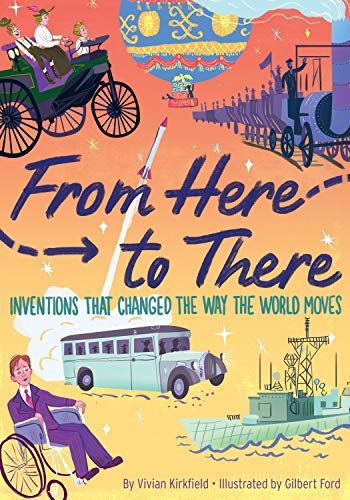
From Here to There: Inventions That Changed the Way the World Moves
Written by Vivian Kirkfield
Illustrated by Gilbert Ford
Ages 8-12 | 96 Pages
Publisher : HMH Books for Young Readers | ISBN-13 : 978-1328560919
Publisher’s Synopsis: Celebrating the invention of vehicles, this collective biography tells the inspiring stories of the visionaries who changed the way we move across air, water, and land. Perfect for fans of Mistakes that Worked and Girls Think of Everything.
In a time when people believed flying was impossible, Joseph and Etienne Montgolfier proved that the sky wasn’t the limit. When most thought horseback was the only way to race, Bertha and Karl Benz fired up their engines. From the invention of the bicycle and the passenger steam locomotive, to the first liquid-fuel propelled rocket and industrial robot, inventors across the world have redefined travel. Filled with informative sidebars and colorful illustrations, this collective biography tells the story of the experiments, failures, and successes of visionaries who changed the way the world moves.
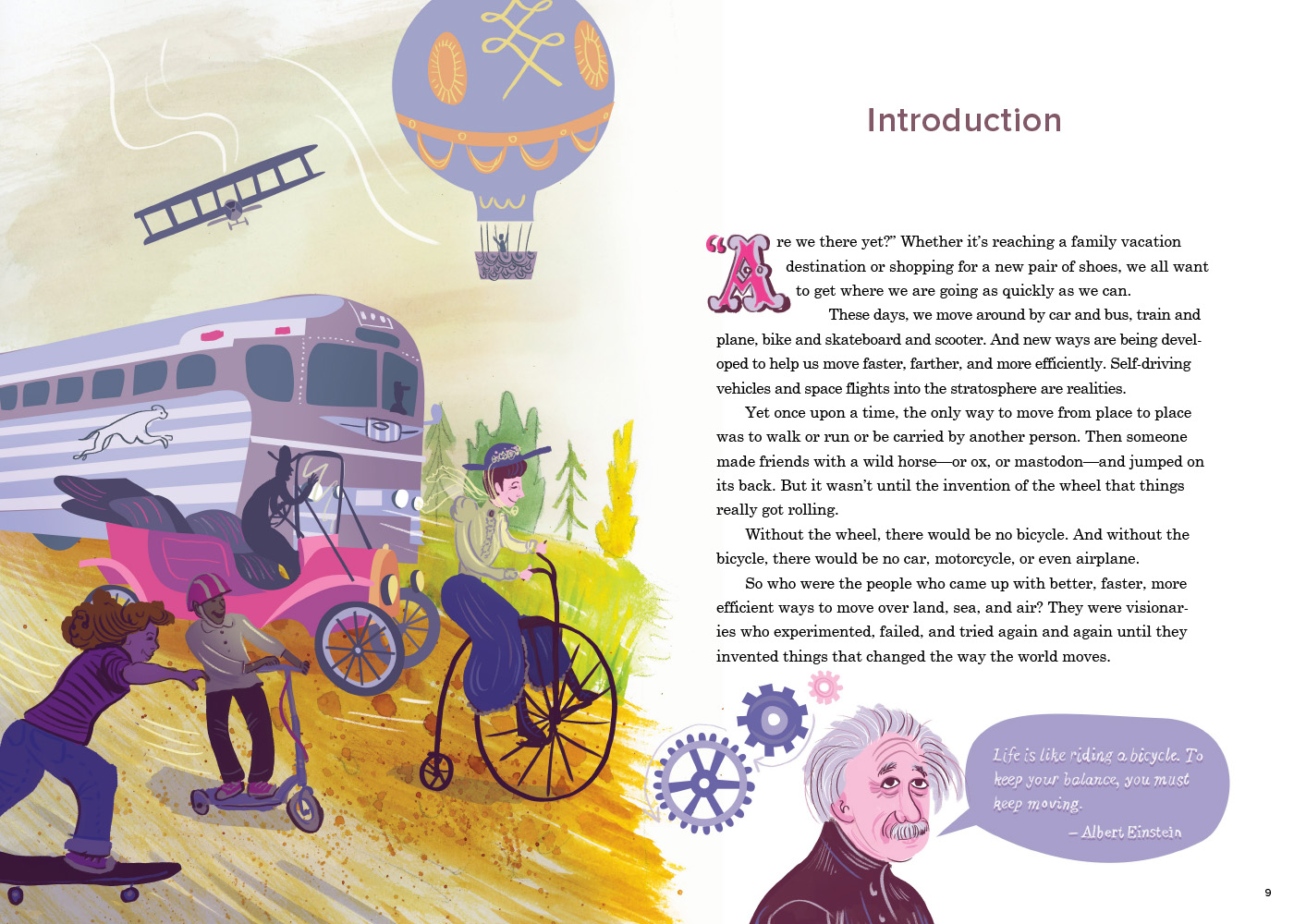
Buy the Book
This speed interview with Vivian Kirkfield, author of From Here to There: Inventions That Changed the Way the World Moves, was conducted by Bianca Schulze. For similar books and articles, follow along with our content tagged with Biographies, Books About Inventors, Inventions, Non-Fiction, and Vivian Kirkfield. Be sure to follow along with our Speed Interview series, too.

2 Comments
I like the approach that you covered the process – what worked and what failed. There is more to being a success than just a brilliant idea.
Interesting that the author feels that giving children a good education is so vital – it’s a need I think that libraries have tried to fill for decades.
Congrats to grand prize winner Anne P. (CA), and the two lucky runner-up winners Brittany G. (NC) and Susan P. (FL)! Prizes will be on the way soon. Enjoy!